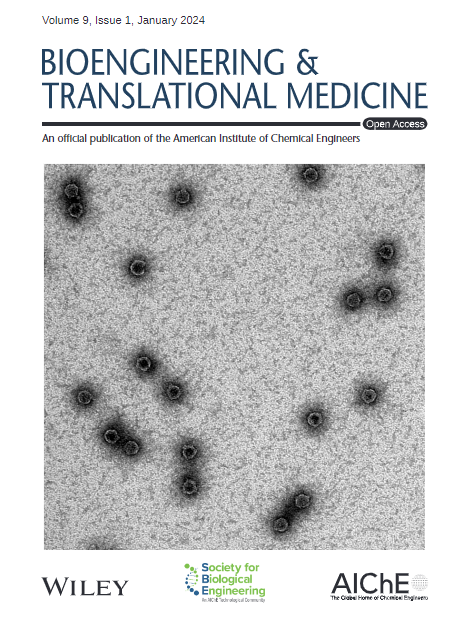A digital ELISA for multiplexed detection of allergen‐specific IgE against Der p 1, Der p 2, and Der p 23
IF 5.7
2区 医学
Q1 ENGINEERING, BIOMEDICAL
引用次数: 0
Abstract
The house dust mite一种用于多重检测Der p1, Der p2和Der p23的过敏原特异性IgE的数字ELISA
屋尘螨产生主要的过敏原(Der p1, Der p2和Der p23),需要精确的IgE检测才能进行临床诊断。我们开发了一种多重数字ELISA,使用荧光编码微磁珠(532 nm/638 nm双波长系统)与微流体结合,同时定量血清IgE对这些成分的影响,并对临床标准UniCAP系统进行综合评估。532 nm通道通过酶扩增荧光的平均亮度增加(ABMB)来测量过敏原特异性信号,而638 nm通道用于光谱珠分化。与UniCAP的比较评估显示,改进的数字ELISA在15.8%的ABMB阈值下,对过敏原的灵敏度达到统一的75.0%,但特异性可变(42.9%-54.5%)。样本分类结果(Der p 1:9阳性/6阴性;Der p 2: 7/8; Der p 23: 7/8)显示,阳性预测值(33.3%-60.0%)低于较有利的阴性预测值(60.0%-85.7%),似然比(LR+: 1.31-1.65)和科恩κ(0.12-0.25)表明诊断可靠性有限。自动化平台可减少60%的样本量(20 μL vs 50 μL),具有多重检测能力,并保持对低滴度样品的敏感性,是一种有效的筛选方案,有待特异性增强。
本文章由计算机程序翻译,如有差异,请以英文原文为准。
求助全文
约1分钟内获得全文
求助全文
来源期刊

Bioengineering & Translational Medicine
Pharmacology, Toxicology and Pharmaceutics-Pharmaceutical Science
CiteScore
8.40
自引率
4.10%
发文量
150
审稿时长
12 weeks
期刊介绍:
Bioengineering & Translational Medicine, an official, peer-reviewed online open-access journal of the American Institute of Chemical Engineers (AIChE) and the Society for Biological Engineering (SBE), focuses on how chemical and biological engineering approaches drive innovative technologies and solutions that impact clinical practice and commercial healthcare products.
 求助内容:
求助内容: 应助结果提醒方式:
应助结果提醒方式:


